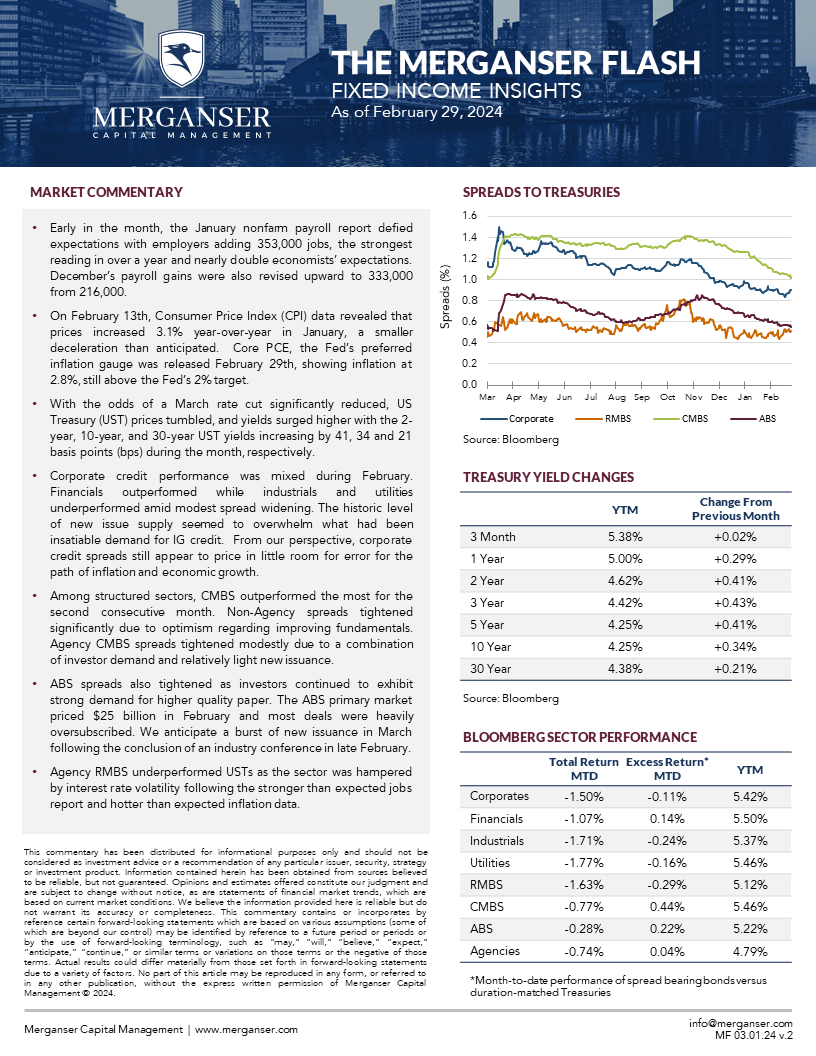- Early in the month, the January nonfarm payroll report defied expectations with employers adding 353,000 jobs, the strongest reading in over a year and nearly double economists’ expectations. December’s payroll gains were also revised upward to 333,000 from 216,000.
- On February 13th, Consumer Price Index (CPI) data revealed that prices increased 3.1% year-over-year in January, a smaller deceleration than anticipated. Core PCE, the Fed’s preferred inflation gauge was released February 29th, showing inflation at 2.8%, still above the Fed’s 2% target.
- With the odds of a March rate cut significantly reduced, US Treasury (UST) prices tumbled, and yields surged higher with the 2-year, 10-year, and 30-year UST yields increasing by 41, 34 and 21 basis points (bps) during the month, respectively.
- Corporate credit performance was mixed during February. Financials outperformed while industrials and utilities underperformed amid modest spread widening. The historic level of new issue supply seemed to overwhelm what had been insatiable demand for IG credit. From our perspective, corporate credit spreads still appear to price in little room for error for the path of inflation and economic growth.
- Among structured sectors, CMBS outperformed the most for the second consecutive month. Non-Agency spreads tightened significantly due to optimism regarding improving fundamentals. Agency CMBS spreads tightened modestly due to a combination of investor demand and relatively light new issuance.
- ABS spreads also tightened as investors continued to exhibit strong demand for higher quality paper. The ABS primary market priced $25 billion in February and most deals were heavily oversubscribed. We anticipate a burst of new issuance in March following the conclusion of an industry conference in late February.
- Agency RMBS underperformed USTs as the sector was hampered by interest rate volatility following the stronger than expected jobs report and hotter than expected inflation data.


